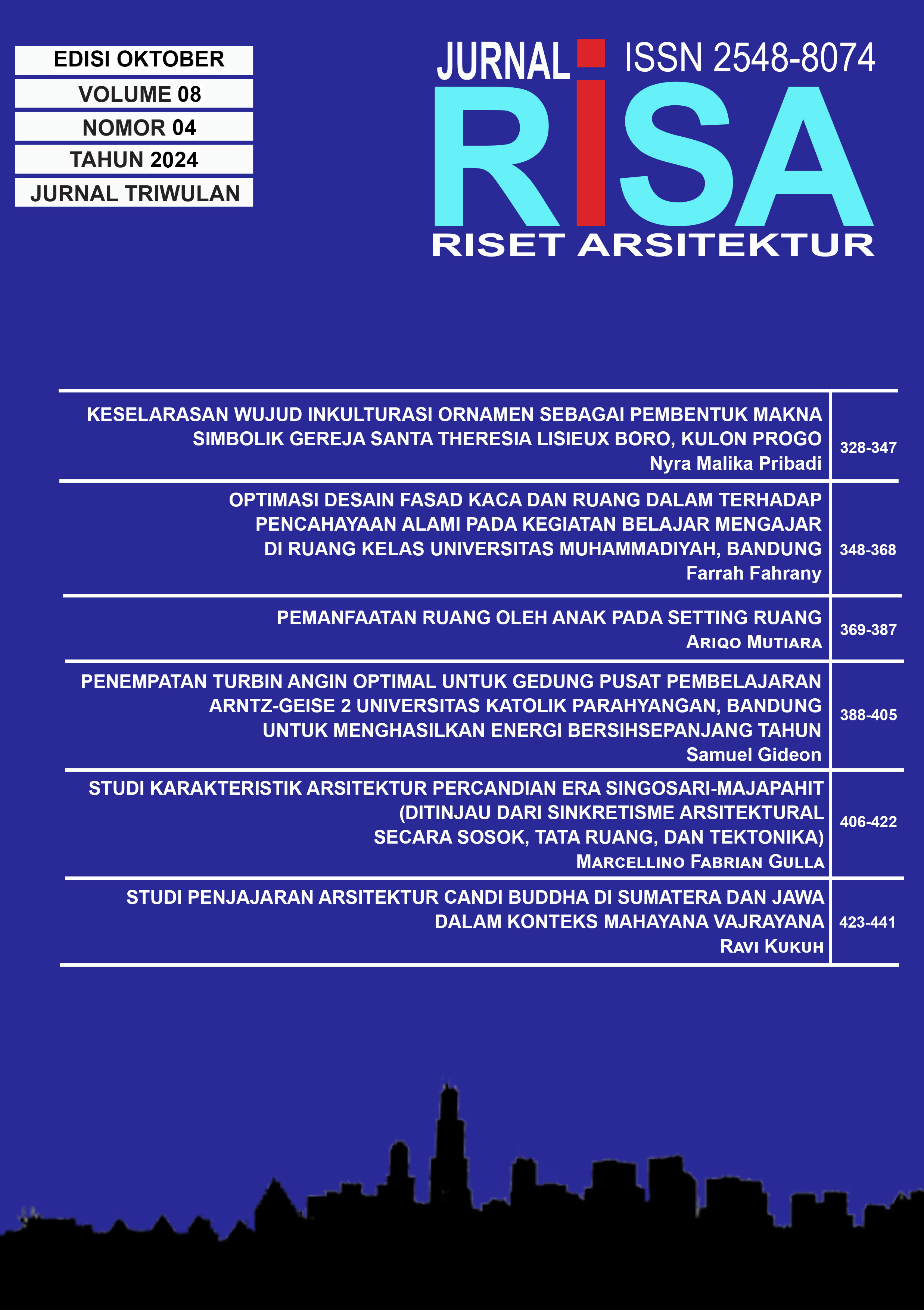ARCHITECTURE CHARACTERISTICS STUDY OF THE SINGOSARI-MAJAPAHIT ERA TEMPLES (IN TERMS OF ARCHITECTURAL SYNCRETISM BY FORMS, SPATIAL ORDERS, AND TECTONICS)
DOI:
https://doi.org/10.26593/risa.v8i04.8587.406-%20422Abstract
Abstract - Hinduism and Buddhism were introduced to Nusantara society in the 5th century, when maritime trading routes that connected India in the west and China in the east thrived in the region. In its development, Hinduism and Buddhism experienced significant progress in the Island of Java which one of them marked by the construction of Hindu and Buddhist temples that now Indonesians call as Candi at the beginning of the 8th century in the era of Ancient Mataram Kingdom. Candi itself are ancient temple buildings that has religious functions and originated from the Hindu-Buddha era in Nusantara. As time goes by, the glory of Ancient Mataram Kingdom started to fade, along with the move of the government to the east. The fading Ancient Mataram Kingdom gave birth to newly established kingdoms, from Kediri Kingdom, which followed by Tumapel Kingdom or popularly known as Singosari and up to Majapahit Empire. In this period of time, a form of syncretism arose from Hindu-Buddhist beliefs that had existed into a concept calls Shiva-Buddhism, with influences from Tantrism, and the revival of native Nusantara beliefs. The syncretism that happened gave influence to architectural composition of Cnadi that was built in this period with its own characteristics that is distinct form its predecessors.
Study about Singosari-Majapahit era Temples that have existed have not fathomed about syncretism from its architectural side, therefore it needs further studies through this research. This research is conducted using a qualitative approach with the aim of understanding the characteristics of Singosari-Majapahit era temples, also to find out the similarities and differences of Singosari-Majapahit era temples with Hindu temples and Buddhist temples through analysis in forms, spatial orders, and tectonics. After being analyzed, it is found that the syncretism that occurs in the temples did not have a default pattern, which the syncretism itself is only accepted conceptually whereas practically it is in the form of hybrid. Moreover, it is also found that the arrangements of temple complex had drifted into elongated and linear order as an embodiment of egalitariansm which was also mentioned in Panji tales, with the main temple is at the rearest part of the complex. This kind of arrangement will later influence and still can be seen by us now in the religious complexes of Bali.
Keywords: candi, characteristics, syncretism, Singosari-Majapahit
Additional Files
Published
Issue
Section
License
Copyright (c) 2024 Marcellino Fabrian Gulla

This work is licensed under a Creative Commons Attribution-NonCommercial-ShareAlike 4.0 International License.












